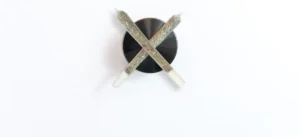Life After Rehab: Preventing A Relapse

No matter how someone gets here, early recovery for any addict can be a scary place. Life for the addict is changing and there is no clear path to take. For people exiting a rehabilitation program, the fear of relapse is high, because while in the program they were safe from coming face to face with their substance. Rates of relapse are high for all addicts, but a few things can help you avoid this path as you work towards a healthier, better life.
12 Steps: A Lifeline For Many
The number one recommendation is to join a 12-step program. The most famous of these programs, Alcoholics Anonymous, was started in the 1930s, and many 12-step programs derive their plan from the original text. Doing the steps, however, is only one reason why AA/NA work. One of the biggest reasons a twelve-step program is successful is that the addict can find people of similar mindset. Active addiction is a very lonely place: by the time they are seeking help, the addict is isolated from friends and family, since bad behaviour does not create deep and long-lasting friendships.
Oftentimes, rehabilitation counsellors will recommend that you cut off people you used to use with in order to avoid relapse. But how can you cut people off if there is no one to replace them? Since the 12- step programs are filled with other alcoholics and addicts, it becomes a natural spot to find people who are easy to talk with and who might have similar stories. Being able to talk with like-minded people, who know what you mean when you talk about that craving or describe those horribly real using dreams, is not only comforting, it allows you to make friendships that are based in recovery, not drinking and drugging.
Some people leaving rehab for the first time are nervous about joining a 12-step program, as there is still a stigma about it being filled with old white men discussing God. Though spirituality is a big component of all AA/NA programs, there is a wide variety of meetings out there, and finding the right one may take a few tries. If one meeting doesn’t work, try another. There are plenty of twelve-step meetings, all of which might have a different feel to them, so remember that just because the first meeting may feel awkward, that doesn’t mean they all will. The recovery community is very diverse, and being open to finding a meeting that fits within your life increases the chances of avoiding relapse.
Support is just a few clicks away
The 12-step community has gone a long way to make everyone feel comfortable, and can reach those who may be more inclined to use technology to enhance their recovery program. Recovery communities are popping up on places like Facebook and Instagram, and though these should not be used to replace a twelve-step program, they are a wonderful way to engage with the community in a more modern style. For those who worry about the anonymity of the online communities, there is also the opportunity to listen to recovery material in the way of audio books and podcasts. Simply by typing in “recovery” to their preferred podcast search engine, they will be able to find free programs that allow addicts from all over the world to engage in the different topics being covered. In this modern age of everyone having access to information at the tips of their fingers, the recovery community is no different. There are apps that are designed to help people through their cravings, track how many days sober and how much money has been saved by not buying drugs/alcohol, where the closest meeting is, what type of meeting it is and how to get there. By spending some time searching, the addict has a large store of information and help that is free and can be accessed at any time.
Emotional sobriety
Once there has been an established connection within the 12-step community, it is time to add other forms of therapy to the mix. One of the biggest pitfalls when it comes to recovery and relapse is not having emotional sobriety. Emotional sobriety refers to the idea that it is not drinking/drugging that is the addict’s problem, it is the emotion behind the addictive behaviour. In our society, there are many ways in which people can numb out so that they do not have to deal with their feelings. Anything from binge watching Netflix to overeating to shopping, can all be used to hide one’s feelings or simply forget about them for a while. Chances are that if the addict has been through rehab and is now trying to figure out life as a sober person, they still have great difficulty processing their emotions. Actually, this can be difficult for anyone, but it is especially important for the addict to be emotionally sober, as going on an emotional bender can lead to relapse. Within the recovery community, there are countless stories of people who had been sober for years, but never learned how to process their emotions, and when things went wrong in their life, relapse happened.
Cognitive Behavioural Therapy
One of the best-known methods of achieving emotional sobriety is by attending Cognitive Behavioural Therapy. The reason this is so relevant for those going through addiction recovery is that they are able to analyze the causes behind their behaviour. So, in other words, what triggers the addict to want to drink/drug? Not only does Cognitive Behavioural Therapy teach ways in which to identify triggers, it also helps the addict find other ways of dealing with overwhelming emotions. Cognitive Behavioural Therapy will teach the addict different methods which can be used when a craving hits, and what they might be able to do in order to help that craving subside. By learning these different techniques, the addict can be more aware of situations that might trigger a relapse and how to deal with them.
Mindfulness
Another method of dealing with the inevitable cravings is through mindfulness. Mindfulness can be anything from meditation, yoga or deep breathing techniques. For those who may not have the funds to go to a formal therapist, these are all things they can do and learn on their own. YouTube is an incredible resource for people looking for new methods of relaxing or dealing with difficult emotions in the moment. Free yoga classes and guided meditation are very popular on YouTube, and finding something that works for the specific individual can be relatively easy. There are also numerous apps that the addict can try, for example Calm or Headspace, that can be used for a multitude of situations. In early recovery, the addict’s body and mind are going through an incredible amount of changes, and by listening to a five-minute guided meditation, they are more likely to get through the difficult moments and fight off those feelings which may lead to relapse.
The benefits of physical activity
Continuing in this same vein of thought, another way to prevent relapse is by getting active. Becoming physical can not only benefit one’s physical health, it can also enhance mental health. There is a proven link between physical activity and lowering depression levels, which is something people in addiction recovery need to be wary of. A high percentage of addicts suffer from some form of mental illness, which is hardly a surprise when going back to our earlier discussion about emotional sobriety. One of the physiological reasons people get addicted is that the substance they use triggers dopamine – the natural feel-good drug – to be released in the body. As use becomes more frequent, dopamine floods the addict’s body and they need the substance simply to feel normal. When taking away the drug, the addict’s dopamine levels can drop dramatically, causing feelings of depression. Being physically active can raise dopamine levels in the body in a more natural way, and this can give the addict a similar feeling to when they consume their chosen substance. So staying active can be a crucial part of the recovery process, as the addict is less likely to try to find that unnatural dopamine hit if their body is producing it naturally.
Find an interest outside of the recovery community
Finding an activity to participate in can also be important in recovery as it is another way to find a community. By joining a team, going to a local yoga studio or participating in a group exercise program, the addict is able to find people they can talk to who have nothing to do with their past. Something that a lot of people worry about when in early recovery is the idea of having fun without their drug of choice. Many addicts think that they need drugs/alcohol to have fun and meet new people. By participating in an activity with others, they can start to make friendships outside of the recovery community, which in turn will make them feel more independent and experience the type of joy they were seeking when turning to drugs and alcohol. Though straying from the recovery community completely would not be advised, having things that have nothing to do with their program can create a sense of balance in the addict’s life, which is something we could all have a bit more of.
When all is said and done, the alcoholic/addict needs to be willing to put in a lot of work to prevent a relapse. Whether or not rehab is part of the story, staying sober is incredibly difficult. It is important for those around the addict to support them in any way they know how. There is no one answer for dealing with addiction but finding long term sobriety can be achieved. But patience is needed. And if all else fails, look for people who seem to be doing sobriety “right” and learn from them as much as possible.
A message of strength and hope from a recovering alcoholic
Something to keep in mind when in early recovery is that you have to be gentle with yourself. Recovering from addiction is not an easy task and when you look at the numbers, not many people do it. This does not mean that you cannot be successful at avoiding relapse, but it will take a lot of work. There will be times when the cravings are so loud that you will feel like they are all you can hear. In these times it is important to remember some of what was discussed above and do something that will help you get through that moment. Whether it be calling your sponsor, doing some meditation or going for a run, it doesn’t matter. What matters is that you do something. Being passive in recovery and hoping that things will work out is not going to keep you sober. You need to be able to work on your sobriety with the same focus you gave to your addiction. When in active addiction it is hard to think about much else other than your drug of choice. You spend the whole day planning and scheming when you will be able to get your next hit/drink. So use that same type of focus when working on your recovery. Don’t just try one thing and expect it to work. Try them all. Because at the end of the day, the most important thing is your recovery.
And if you feel like you are doing everything and still feeling the same, remember that it is progress, not perfection. Think back to your days of using and really examine the type of person you were and what type of life you led. Whether you have been sober two weeks, two months or two years, you are different from the person you were, and that is pretty special.
And if you do relapse? TRY AGAIN. Recovery doesn’t happen overnight and just because you relapsed, that doesn’t mean your recovery journey is over. Have faith in yourself and show the world just how strong you really are.
Photo credit: Satish Krishnamurthy. This picture has a Creative Commons attribution license.




